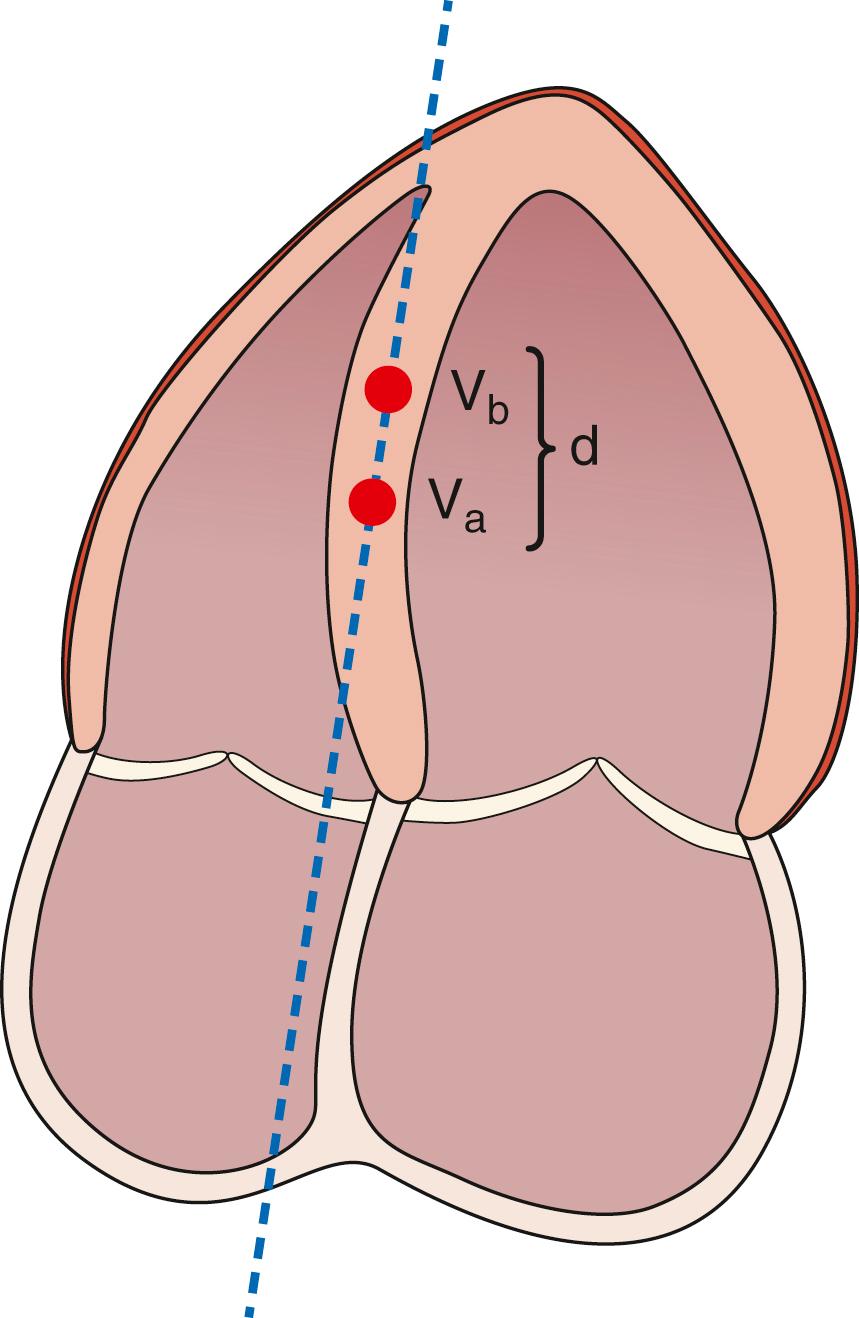Physical Address
304 North Cardinal St.
Dorchester Center, MA 02124
Doppler shifts within the heart return either from moving red blood cells or moving myocardial tissue. Blood flow is high velocity; therefore, pulsed-wave Doppler assessment requires backscatter of high velocities and low amplitudes. In comparison, tissue Doppler imaging (TDI) focuses on myocardial velocities at specific locations within the heart that are much slower and amplitudes that are much higher. Distinction between Doppler signals originating from the myocardium and blood flow requires adjustment of gain, wall filters (high-pass filter for blood flow and lower-pass filter for tissue velocity), and velocity scale of the Doppler spectral or color display. TDI velocities may by displayed as a spectral Doppler trace with the signal recorded from a specific sample volume site as a color-encoded M-mode or color-encoded two-dimensional (2D) trace.
TDI interrogates the motion of the myocardium at a single point with reference to the ultrasound transducer. Therefore, it is limited by myocardial tethering and translational motion. , Using TDI for the assessment of systolic ventricular function suffers from an inability to differentiate actively contracting myocardium from passive myocardial motion caused by tethering. As a result, normal velocities may be detected in a hypokinetic or akinetic segment when it is being pulled on by normally contracting adjacent myocardial segment. TDI is also dependent on achieving parallel orientation between the ultrasound beam and the direction of myocardial motion. Ideally, the incident beam angle should not exceed 15 degrees to maintain underestimation of velocity to 4% or less.
Strain and strain rate imaging overcomes the limitation of passive myocardial motion caused by tethering because measurement of myocardial deformation is independent of adjacent segments. TDI-based strain was the initial echocardiographic approach to measure myocardial deformation and measures strain in the direction of the ultrasound beam. Natural strain and strain rate are derived from tissue Doppler myocardial velocities from the velocity gradient calculated as the difference of two instantaneous velocities (V a and V b ) normalized for the distance (d) between them (measured in units of s -1 or 1/s) ( Fig. 4.1 ):

Whereas shortening rate of a myocardial segment in relation to its original length is represented by a negative value, lengthening rate is represented by a positive value. Strain (measured as a percentage) is derived from the time integral of strain rate:
Speckle-tracking echocardiography (STE) is based on tracking natural acoustic markers that appear as bright and dark spots on the grayscale image within the myocardium over subsequent frames. , The speckles are the result of constructive and destructive interference patterns caused by backscattered signals from structures smaller than the ultrasound wavelength. , A cluster of speckles (a kernel) are tracked from frame to frame with respect to their original position to allow for assessment of strain in two dimensions ( Fig. 4.2 ). From apical images, speckles can be tracked in the longitudinal direction, and from parasternal short-axis images, speckles can be tracked in the radial and circumferential direction.

Compared with TDI, STE is a largely angle-independent technique and provides a direct measurement of strain. Image quality must be of a high enough quality to track a region of interest accurately, and it is important to minimize foreshortening. Frame rate is an important consideration in STE with an optimal frame rate considered to be in the range of 40 to 80 frames/sec. A frame rate that is too high may not provide enable speckle displacement for the tracking algorithm, but a frame rate that is too low leads to the loss of speckles because they may move out of the plane of the subsequent frame.
STE-derived strain is based on Lagrangian strain because the analysis is based on the original length (l o ) . Strain or deformation of a myocardial segment is defined as the difference between the final (l) and original length (l o ) divided by the original length:
STE-derived strain tracks the speckles and determines the distance between two markers in a defined myocardial region and plots this distance over the cardiac cycle. Strain rate is then derived as the first derivative, or the slope of the graph of strain over the cardiac cycle.
Become a Clinical Tree membership for Full access and enjoy Unlimited articles
If you are a member. Log in here